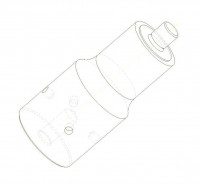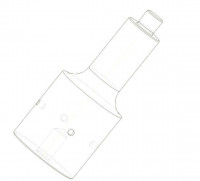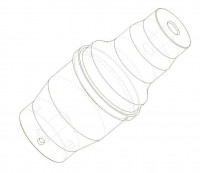Ultrasonic boosters
The transmission ratio
Depending on the design, the sonotrode has its own transmission ratio resulting from its geometry. This describes the ratio between the amplitude at the base point and the amplitude at the cutting or welding contour. In many cases, the transmission ratio within the sonotrode cannot be made sufficiently large, either because the diameters become too large or because the cross-sectional jump would lead to overloading of the material. In these cases, the amplitude can be increased using external boosters.-

Booster 1:1 for 40kHz
290,00 €excl. 19% VAT
add. shipping fees
To product » -

Booster/transformer piece 1:1 for 30kHz
590,00 €excl. 19% VAT
add. shipping fees
To product » -

Booster/transformer section 1:1 for 20kHz
1.295,00 €excl. 19% VAT
add. shipping fees
To product »
How is a sonotrode created?
Before a sonotrode can be manufactured, the designer defines the contours based on the component geometry. Depending on the size of the workpiece and the material, the frequency is then selected and a CAD model is created using reference data. The finite element method (FEM) is then used to adjust the vibration behavior. This means that the model is modified until the vibration behavior is optimal in terms of both amplitude and uniformity. The CAM data for the machining center is then generated from the CAD model and the sonotrode is manufactured by machining the solid material.
Fault patterns and countermeasures
Sonotrodes are subject to wear due to material contact as well as thermal and mechanical loads. We have summarised some typical error patterns in this video.
Do you have questions?
Other ultrasonic components
Ultrasonic
converter
Variety of ultrasonic converters
mth offers ultrasonic converters for common frequencies such as 20 kHz, 30 kHz, 35 kHz and 40 kHz. Der Konverter wandelt den hochfrequenten Wechselstrom des Ultraschall-Generators in mechanische Schwingungen mit Amplituden von etwa 5-12 µm um.
Ultrasonic
generator
Our ultrasonic generators
Various
sonotrodes
Energy-efficient welding
For more than two decades, we have been manufacturing sonotrodes in-house for various ultrasonic systems from different manufacturers suitable for common applications such as welding, cut-off welding, riveting, embossing, punching and cutting.